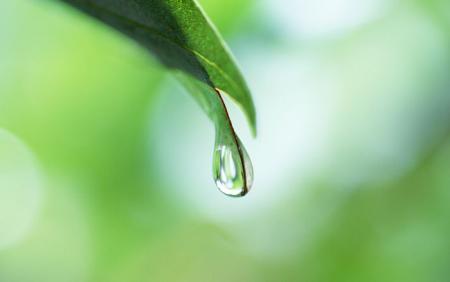Serendip is an independent site partnering with faculty at multiple colleges and universities around the world. Happy exploring!
Happiest at English House
Hello, I am Shengjia (Ashley) Zhu from Shanghai, China.
Everything in the Park Science Lab was still and lifeless. Even the sunlight seemed weaker though the glass window. I was very uncomfortable in the void lab. And I don’t think any plant would be happy to live in a lab either.
The pavement was cracked and the sun was hot at the parking lot. My view was filled with rolls of cars. Plants were pushed to the very edge of the space. Alone in this empty spot, I felt so stressful that I wanted to flee.
The English house was a lovely and quiet place away from the main campus. Stood in great harmony with the surrounding trees, the English building seemed to be its own world of peace and serendipity. I felt calm and relaxed at the house.
The plants are certainly happy in Morris Woods since they grow without restrictions. However, it was a bit hard for me to freely move around and orientate in this little kingdom of thriving plants, chirping birds and flying insects.
It was showering when I got to Dalton staircase. The rain splashed onto the glass and made lousy noises. Though I stayed dry with the protection of the glass, I felt colder and more helpless.
I believe plants and human both like to stay at peaceful yet vital places. The difference is that rain make plants happy and human unhappy.
Relating to the Surroundings
Hello everyone! I am Yaxuan (Barbara). I love exploring the new, going outdoors and getting close to the nature. Because of my crazy schedule during the shopping week, I was not able to visit the five sites in a row. I went to each place during different time of the day; therefore, the variables (time, weather, temperature, crowds, etc.) might have influenced my experience and thus the reflection. My favorite location is the glass staircase in Dalton Hall. It was in the morning, quiet and refreshing. The scene was great and I could observe from different angles by going up and downstairs. I felt protected by the glass architecture still had the connection to outside surroundings. My second favorites go to English House and Morris Woods as a tie. I went there 2:30 pm. It just rained. The woods were very lively. Plants in the woods seem to have been lived for hundreds of years because they are all huge; obviously the woods would be the most ideal location for plants. However, I predict that if I were in the woods alone during night, that would be very scary and I wouldn’t be able to enjoy. My fourth favorite is the lab in Park Science; actually I was taking a Bio class there and I enjoyed it. However, the space was packed and I felt overwhelmed by it. My least favorite space was the Campus Center Parking Lot. It wasn’t lively or pleasant. The area was hotter than other places. My guess for plants’ favorite as from best to worst is as below: Morris woods, English House, Dalton Hall, Park Science and the parking lot.

Active and Passive Voices
When I started reading "A Journey into Speech," I was immediately struck by the way Cliff had to overcome a silencing of her culture – the African roots of Jamaica – in order to be able to accurately speak to herself. I was also struck by the way she had to bridge the gap between King's English and patois that was created by this silencing. For Cliff, words take on the role of tools to funnel her frustration and rage. She writes to expose the influence of the colonizerand in this exposure, she finds a voice that is separate from either King's English or patois. This new voice, though fragmented, is her way of showing the struggle of Jamaicans and other colonists to understand their dual identities – the mother country versus the colony.
In contrast, Smith sees words as the end rather than the tool. In the introduction to "Fires in the Mirror," Smith describes her relationship with words as follows: "I had not controlled the words. I had presented myself as an empty vessel, a repeater, and they had shown their power." Unlike Cliff, whose words were difficult to find and difficult to fit together because of her fragmented history, Smith acts as a more passive writer. She uses language as a tool for learning too, but she doesn't so actively use it as a tool for change. In fact, she's not even chanelling her own feeling or emotion, but others' feelings and emotions.

Silence and Perspective


Silence and Motion
When I thought about silence, I kept coming back to what Irene said in class about silence being entangled with noise; such as our pauses between words and sentences. So I felt as though my visualization needed to convey my fascination with the concept of silence as a part of a larger whole that incorporates both silence and noise. I envisioned silence just before or after something completes a fall, the silence of the fall itself. This idea felt similar to the phrase “the quiet before the storm.” For me, this “quietness” or silence before noise was captured through a photograph of a raindrop as it rolls off the tip of a leaf. Ultimately the drop will break its fall to create both sound and movement but the moments before that plop into the water and subsequent ripple effect seem silent to me. This is especially true in photographs, which can capture moments and extend them, making them appear clear and motionless. The capture itself is a kind of silencing, because whatever was in motion will stay forever poised, locked in the silence occurring before the drop. A person who looks at a photograph sees the frozen moment and anything else they see or hear is imagined and shaped by their own interpretation and expectations of that moment.

Experiencing silence
To reach the state of absolute silence is hard. The reason I choose this picture is to represent the place where I think I might find certain level of silence. Every object, whether it's living or not, has its own way of exsiting in this world and makes its sound in its own frequency. The world we are living is composed of the music made by all objects around us. Their existences don't depend on our achknowledgement. However, it is said that once you reach the deeper depth of sea, you will experience deadly silence. I still doubt whether it's absolute silence. If we can't hear it, does it mean that the silence finally takes place.


Language
At the beginning of her essay Anna Devere Smith explains that when she started her project she was “not as interested in performance” as she was in language. This immediately struck me because I’ve always considered speech and the use of language to be a type of performance in and of itself. Language goes beyond words – we express ourselves through intonation, body movement, pitch, and facial expression. We are always theatrical when we talk. We are performing. The dichotomy Smith initially presents between the actor and the character is therefore confusing to me because I really do think that we are all playacting ourselves in everyday life. She goes on to explain that “the act of speech, then, does become performance” in reference to seasoned interview subjects who spit out sound bites with ease. But we’re all acting all the time, and the types of criticism Smith encountered during her performances of “On the Road” are censures that most people have encountered at sometime in our life. We are all characters of ourselves which is why its possible for everyday people to be “not black enough” or “too Jewish” in our speech and affectation even when we’re not standing on a stage.
Happiness in a Green World
Here is my ranking, from happiest place to unhappiest place:
1. Morris Woods
2. Dalton Staircase
3. Park Science Lab
4. English House
5. Parking Lot
I absolutely loved the Morris Woods. Once I found my way into the woods, I felt like it was a great, peaceful place. I felt that the plants surrounding me provided this calm, protective bubble from rain and the sometimes pervasive noises of humanity. I felt like I had to keep going down the path to discover what was at the end of it, which I am glad that I did because I thought the graveyard and the bench were really cool spots to explore. Plants would be happiest here because their growth is unrestricted by humans and because their basic survival needs are most available there.
I felt good in the Dalton Staircase. There was a lot of sunlight streaming into it and there was a feeling of clarity and openness that I liked. Plants would be maybe second happiest here because of the sunlight pouring through the glass, even if they would be confined to a pot.





